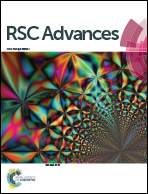Waveguide based energy transfer with gold nanoclusters for detection of hydrogen peroxide
Abstract
H2O2 detection that uses fluorescence resonance energy transfer from InGaN quantum wells to Au nanoclusters via optical waveguiding has been developed. Steady and time-resolved photoluminescence studies have been used to demonstrate the waveguide-based energy transfer. H2O2 detection is achieved by the quenching of the red emission from Au nanoclusters. Advantages of the sensing technique include the capability of visual detection and large area analysis.


 Please wait while we load your content...
Please wait while we load your content...